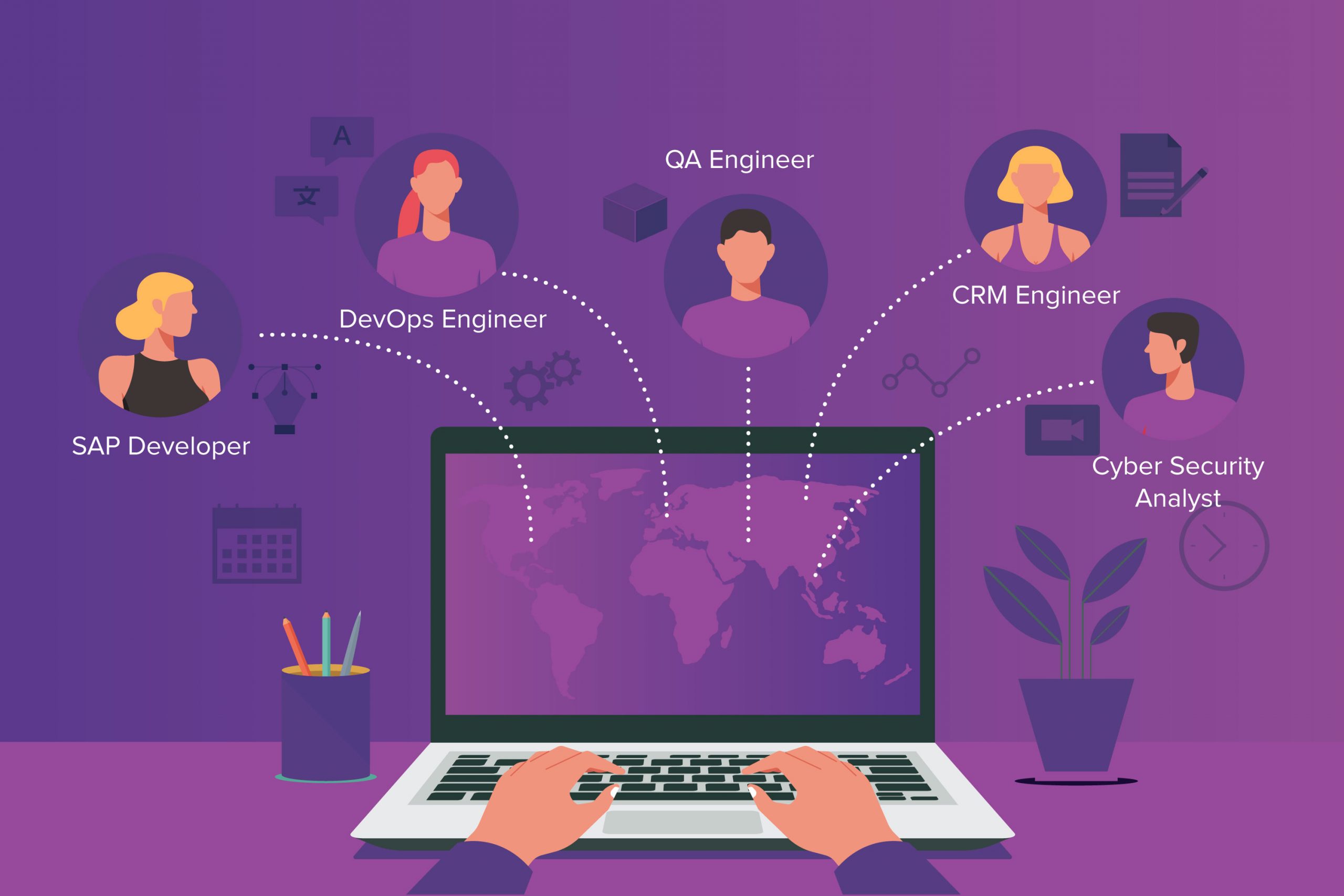Steps To Build Your Dream Remote IT Team

Author: Daniyal Chishti
At the beginning of the pandemic, many businesses were uncertain about how to manage their workforce. To curb the spread of the virus, various measures like remote and hybrid work had to be implemented on a wider scale. Both have become the norm today. The widespread adoption of the remote working model has been a challenge for some businesses. Essential to business scalability and success, remote teams have numerous benefits. If as a business, you are thinking of growing your remote team, here are the steps you need to take to build an effective remote IT team.
Step 1: Identify The Possible Remote Job Titles
To build your dream remote team, you’ll need to identify the ‘job titles’ you need to fill. Why? You may not have considered that a part of your workforce could work remotely successfully, helping you reduce your overhead costs. By identifying the ‘job titles’ you will discover which roles can go remote and exactly what skills and experience are needed for a particular role.
A good place to start is with an inventory of the roles that exist in your business today. You may have done this before, but creating an updated list will help ensure you’re thinking of all the positions that can be filled remotely in order to meet your goals (and it will also help when you start interviewing potential candidates).
For example, some of the top remote working jobs include Developers, DevOps Engineers, SAP developers, and more. With advances in technology, it is now possible to collaborate on code and projects with software developers regardless of location.
Step 2: List The Top Skills For Each Remote Job Role
As you go about your search for tech-related roles, it will be helpful to remember that every team is different. The ideal candidates for a given role are determined by what skills are needed and what kind of culture you want your remote IT team to have.
Some of the common top skills for remote tech roles are:
- Knowledge of programming languages like C++ and Java, as well as frameworks like Ruby on Rails or AngularJS (AJAX)
- Familiarity with DevOps tools such as Ansible, Chef, Puppet and Vagrant
- Experience managing servers in Linux environments
Moreover, some roles may require more specific knowledge than others. For example, a developer’s primary responsibility will be coding applications or websites from scratch; however, they should also possess certain interpersonal skills that allow them to work effectively in a remote collaborative environment.
Step 3: Engage In Technical Assessments & Interviews
One way to assess a candidate’s suitability for a remote position is to send them an online technical assessment. These assessments can test a variety of skills, from basic computer literacy to more specific knowledge about remote working tools and platforms. By sending an online technical assessment, you can get a better sense of a candidate’s ability to work remotely and their potential fit for your company.
Upon completion of candidate assessments, the next step is to conduct interviews. Conducting interviews is often the most time-consuming part of a job search, but it doesn’t have to be that way.
The most commonly used tools for online video interviews and meetings include: Zoom, Google Meet and Skype. These services allow you to communicate with anyone on Earth who has an Internet connection – no matter where they live or what kind of device they use!
Step 4: Prepare Your Remote IT Team For Their Onboarding Process
You may be wondering how to handle the onboarding process for your remote IT team. Should you do it yourself? Or should you hire an outsourcing company to take care of it? Well, there are pros and cons to both.
Onboarding is important for your remote workers because they need guidance regarding their equipment and software, so they can hit the ground running when they start work. Additionally, many companies want their employees to use certain tools or apps right away (like Slack or Dropbox). This means they’ll need training on those as well if they’re not already familiar with them.
Moreover, onboarding is also important for your remote team because it sets expectations from day one about what their role will entail and what kind of culture exists at the company where they work. This early set-up allows everyone enough time so that all parties feel good about making this change into something successful instead of just assuming things will go smoothly without any preparation beforehand!
Pro Step: Partner With AIQU To Build Your Global Remote IT Team
We hope we’ve given you some great tips to get you started in building your remote IT team. There’s a lot more to learn, but by following these simple steps, you’re already on the right path!
If you are facing challenges with building a global team of remote employees, AIQU can help.
Our Remote360 experts can help you source the best global remote talent. We have our exclusive database of vetted IT professionals. AIQU can help you find candidates that are a good fit for your team, as well as filter out those who are not. This saves you time and money in the hiring process by sifting through resumes and conducting interviews yourself. We can also manage all the compliance and payroll for your selected candidate in the country of their residence.
With outsourced remote IT services, it will not matter where your team is geographically located. You don’t have to spend months on end looking for the right person at all. Instead, just partner with an IT outsourcing company like us with a proven track record of success!
Contact us today to learn more about our Remote 360 solutions. You can also follow us on LinkedIn to learn more about the tech industry, the latest jobs in tech and our services.





